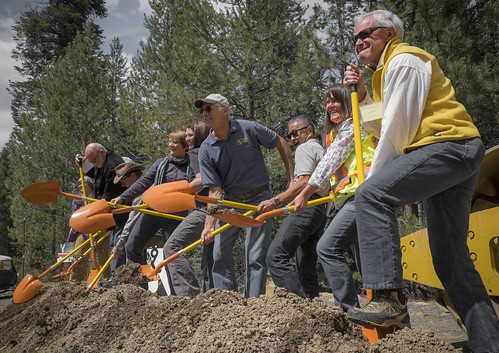
Every year in the U.S. roughly 200 people are killed in as many as 2 million wildlife-vehicle collisions and at a cost of more than $8 billion, according to the Western Transportation Institute.
But the U.S. Forest Service’s Pacific Southwest Research Station scientists, along with their collaborators in the Highway 89 Stewardship Team, are paving the way to reduce those statistics with their latest project. The team broke ground last May on its second and third wildlife underpasses along a 25-mile stretch of Highway 89 between Truckee and Sierraville, California.
“Studies have shown that well-placed wildlife crossings, coupled with fencing, can reduce wildlife-vehicle collisions by as much as 75 to 100 percent,” said Sandra Jacobson, a wildlife biologist with Pacific Southwest Research Station.
While wildlife crossings exist across the country, the Highway 89 crossings will be unique in their value to science. Built to near identical dimensions and only located a mile apart from each other, the underpasses will allow scientists to manipulate conditions to learn what might make an underpass more appealing to wildlife.
For instance there might be things that cancel out noise or add cover within the tunnels that might promote use among smaller animals. The tunnels are adjacent to the University of California, Berkeley’s Sagehen Creek Field Station in the Sagehen Experimental Forest, which will give scientists access to the forest’s research facilities and monitoring equipment.
The $2.8 million project was funded largely in part by a Federal Highways Transportation Enhancement grant. The underpasses should be completed and operational by the fall.
